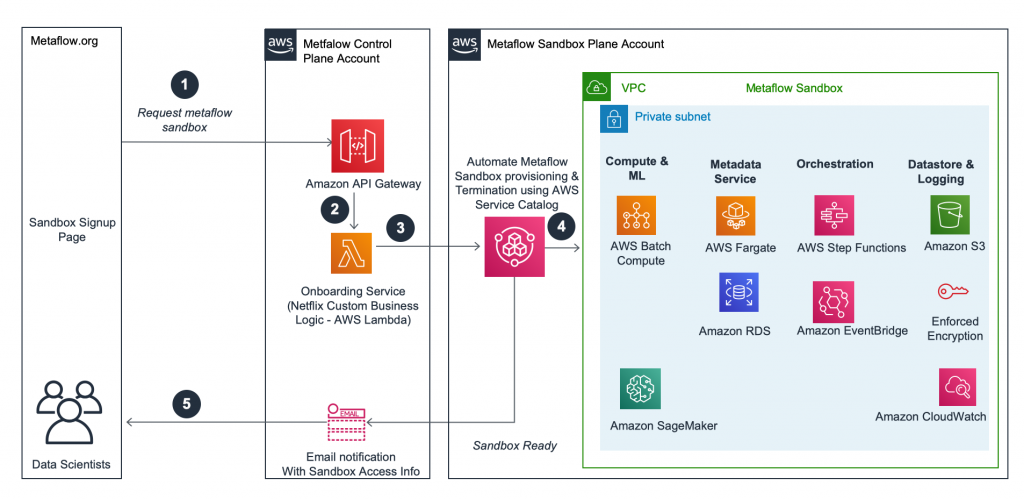AWS Cloud Operations Blog
Category: Management Tools
How to get notified on specific Lambda function error patterns using CloudWatch
This post demonstrates how to automate alert notifications for specific AWS Lambda function errors using an Amazon CloudWatch log subscription. CloudWatch Logs let you invoke a Lambda function when a log entry matches a pattern. Amazon CloudWatch alarms are used to notify when an error occurs with a Lambda function; this notification does not give […]
AWS Config for resource housekeeping and cost optimization
This guest blog post is contributed by Bradley Segobiano, a Lead Software engineer at Genesys. Bradley works with the DevOps team and helps developer teams build and run a stable and highly available application platform. The elasticity Cloud Computing provides is a powerful enabler of innovation. But as new infrastructure is deployed, it is important […]
Prepare for audits using AWS License Manager’s built-in integration with AWS CloudTrail
Learn with Shree on how to use AWS License Manager’s built-in integration with AWS CloudTrail to prepare for software license audit.
Visualizing AWS CloudTrail Events using Kibana
In this blog post you learn how to visualize AWS CloudTrail events, near real time, using Kibana. This solution is useful if you use an ELK (Elasticsearch, Logstash, Kibana) stack to aggregate logs from all your systems and applications, analyze these logs, and create visualizations for application and infrastructure monitoring. This solution is also useful […]
Alarms, incident management, and remediation in the cloud with Amazon CloudWatch
Application workloads being built for the cloud are getting easier to deploy with tools like Amazon Elastic Kubernetes Service (Amazon EKS) and Amazon Elastic Container Service (Amazon ECS and AWS Fargate), infrastructure as code (IaC), and full-scale DevSecOps pipelines. But there’s more to migrating workloads than ease of development and deployment: application workloads still need […]
Lowering costs and focusing on our customers with Amazon CloudWatch embedded custom metrics
This post was authored by Martin Holste, CTO for Cloud at FireEye. Amazon CloudWatch provides a mechanism to publish metrics through logs using a format called Embedded Metric Format (EMF). You can use this to ingest complex application metric data to CloudWatch along with other log data. Although you can use this feature in all […]
Creating a secure DevOps pipeline for AWS Service Catalog
Many AWS customers I speak with want to manage their AWS services using infrastructure as code (IaC) and DevOps practices for managing, versioning, and deploying products and portfolios. A best practice is deploying infrastructure templates from a continuous delivery (CD) pipeline with validation. In so doing, you can provide the AWS services your users need […]
Write preventive compliance rules for AWS CloudFormation templates the cfn-guard way
Continuous delivery pipelines, combined with infrastructure as code tools like AWS CloudFormation, allow our customers to manage applications in a safe and predictable way. CloudFormation helps customers model and provision their AWS and third-party application resources, with features such as rollback to provide automation and safety. Together with tools such as AWS CodeBuild, AWS CodePipeline, […]
Amazon EC2 instance port forwarding with AWS Systems Manager
Port forwarding is a useful way to redirect network traffic from one IP address and port number combination to another. With port forwarding, you can access an EC2 instance located in a private subnet from your workstation. In this post, we walk through a use case where customers have a strict security requirement for their […]
How Netflix’s ML framework, Metaflow drives open source adoption with AWS Service Catalog
It’s indisputable that organizations are increasingly becoming more and more data-driven and data science proficient. The volume of data and the number of people working with data is growing. In places where machine learning is necessary, organizations have typically looked towards the data scientists doing the work to investigate and introduce new tools in this […]









